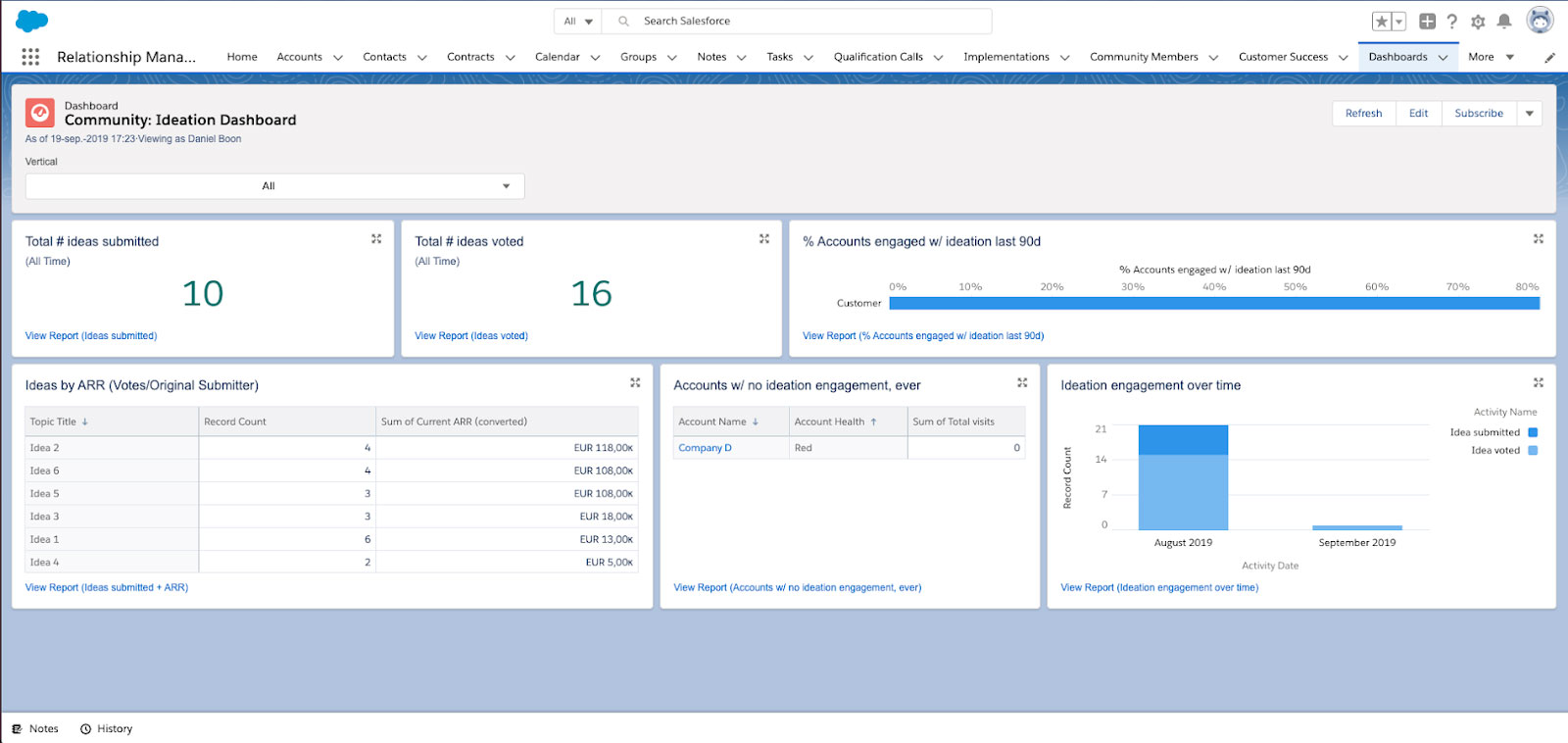Originally published on inSided.com on September 25, 2019.
Great customer support is an essential element of success for every B2B organisation. Any support query coming in is about more than the one-off effect of solving a customer’s problem. In truth, it’s actually about creating (and maintaining) long-lasting relationships between you and your customers.
It makes complete sense that the customer experience is one of the most important factors defining that relationship, right? A bad experience in B2B support, more so than in B2C, can definitively break a good relationship (which can be costly), and subsequently a really good one can provide massive value for everyone involved.
B2B support ultimately has one more challenge—support queries tend to be more complex, unique and technical. So, how do you scale the resolution of these queries without rapidly growing your support or success team, and how do you keep tabs on the quality of the answers you’re providing so they can be re-used for the benefit of more customers?
The answer lies in peer-to-peer (P2P) support communities. While they are commonly used in the B2C world, good examples of P2P-support communities in B2B organisations are rare, and often dismissed by their executive teams for not being effective.
A crying shame, if you ask us!
In this article we touch upon the most important reasons to get started with P2P-support communities in B2B right now, and share a few of our tips on how to get things going successfully.
Firstly, let’s cover why every B2B business should consider starting a support community.
We have previously written a blog on this subject, but in a nutshell:
- You will increase engagement. A general rule of thumb in B2B is that increasing customer engagement results in a better customer experience and a deeper relationship with your product and services. In time this leads to higher customer satisfaction, a greater likelihood of success using your product(s) and ultimately an increase in customer retention and revenue. What’s not to like?
- You will build and effectively scale your self-service capabilities. Let’s face it, as much as we try to build intuitive products and expansive onboarding flows, customers will inevitably have questions. Users want to be able to get their questions answered quickly and effortlessly—73% of consumers say that the most important way a company can value their time is to provide them with good customer support. Essentially, customers will happily answer their own questions when you provide them with an easy way to do so. A win-win, when done through P2P-support communities. A bonus: Peer-to-peer conversations add the human touch that your knowledge base or chatbot is incapable of providing.
- You will get invaluable insights into the usage of your product. A community platform is the way to get regular and structured feedback on your product from the people who use it everyday. You can use this feedback to optimize new features and run ideation groups in beta sections of your community—all the while building a truly customer centric roadmap!
- And, ultimately, you will boost your Customer Success massively—check out our complete guide to Customer Success for more strategies to keep and grow your customers in B2B SaaS.
So, now you know the why, here are 5 steps to increase peer-to-peer support effectively:
1. It’s all about engagement and stickiness
A good P2P-support community doesn’t activate itself. To increase the share of community driven support, you need a good amount of users that keep coming back to answer questions.

This is what we call stickiness, and there are many ways to achieve it within your own user base. For example, regularly posting meaningful content and updates about your product and how to use it effectively. We have learned over the years that your community manager—through engaging with your users and creating interactive content—is one of the biggest contributors to stickiness. Your community manager is the face of your company and part of the user community. This gives customers someone to talk to on the inside, making it easy for users to both give, and receive feedback.
You will find that customers start proactively looking for your community manager’s posts and/or feedback on important topics—not only boosting the personal feel of the community, but also reducing pressure on your own support teams.
What’s more, unlike other support channels, a peer-to-peer community excels in generating trust, confidence and reliability. Users appreciate the fact that everything is shared publicly, will never be deleted, and can always be found again. This builds trust and will make them come back time and time again.
2. Onboarding
Your community should be the go-to location for onboarding materials, and general questions about onboarding. Even when you have an automatic onboarding flow taking customers through your features, customers will still have questions. In this case, direct them to your peer-to-peer community where they can either find the answer to their question already, or easily ask.
It’s hugely important to increase the awareness of your community with brand new customers from day one by making sure all of your onboarding materials are readily available there. As we all know, it’s crucial for B2B SaaS businesses to start adding value from the get-go—think of the community as a one-stop shop that does exactly that for your users.
Side-benefit: More experienced customers will easily be able to answer new customers’ onboarding queries while sharing their experiences. Getting your customers to connect with each other and share their best practices allows your Customer Success team to get insights into your product. As new customers become more aware of, and engaged in, the community they too can share their onboarding insights—keeping the flow of new information about your product and service constantly up-to-date.
3. Knowledge Base
A peer-to-peer community and a knowledge base are a match made in heaven. Why? This allows users to quickly access both company-curated content and the best answers from your user community, all in one place. At inSided, we combine community content and knowledge base materials by using federated search—a great way to ensure customers find the right answers, in the right place.
What we’ve learnt is that many questions answered by peers are simply references to other topics answering the same question, or a link to your company-curated content. Pairing a community with your knowledge base will not only deflect repeat questions, but it also enables your community members to easily share official information.
4. Beta groups, ideation and research
It’s important to include your community users early in development cycles (e.g. by opening a beta/ideation section) and incorporate their feedback into your development roadmap. Why? Firstly, it will help your development process become more efficient, as you will be sure to develop features that you know your users want. Secondly, your users will feel more involved and it will arm them with the product knowledge they need to offer P2P-support when the feature is officially released. A win-win for everyone!
A good practical example is opening up an ideation section on your community. This will allow users to submit ideas, suggestions or feature requests and vote on them to give your product team some added direction. Our community platform captures those ideas and votes, and makes them available on an ideation dashboard. This allows your CSMs to identify the most popular user requests and arms you with concrete business propositions from your customers to bring to your Product team.
Even better, attaching the total ARR associated with a feature request will allow you to attach a monetary value to the most popular product suggestions coming from your customers—meaning you can make real value-driven decisions. Here’s a screenshot of our ideation dashboard, for example, clearly showing the most popular feature requests over time or by ARR:

5. Start a best practices section on your community
Finally, it’s important to acknowledge that sometimes your staff are not the most qualified to answer a customer’s question. Most questions on your community will not be overly technical. They won’t need a developer to review code or deep-dive into a specific feature of your product. They will be about projects involving your product, or operational challenges that customer experts in their own field want to resolve. Often you, as a vendor, are not the right person to answer those questions—let your users do the heavy lifting where possible. How? Open a dedicated section on your community where your users can exchange their best practices using your product. True customer success is only achieved by connecting your users with one another!
Don’t forget: You’re the best judge of top performing content on your community. If you’re at a QBR with a customer and they are doing something really effective with your product, why not ask them to share it on your community? Or if you know one of your customers has solved a problem that a new prospect is facing, why not ask them to help out?
Too many B2B companies are afraid to start communities as they are worried that they can’t control what others say about their product. They become too focused on controlling the conversation around their product and brand, rather than realising that it’s freedom and transparency that customers appreciate. In fact, peer-to-peer communities are the perfect way to scale support, gather feedback and empower your users, all the while helping you to build a better product.
We like to practice what we preach. Is there anything you are missing on this list? Any best practices we should include? Be sure to let us know. And if you need more information on building successful communities, be sure to check out 10 step guide.
Learn More
Looking create a single destination for your customers to connect, share best practices, provide feedback, and build a stronger relationship with your product? Schedule a demo to learn more.


